The Prayer Rugs from Milas
A Symphony of Tradition and Color
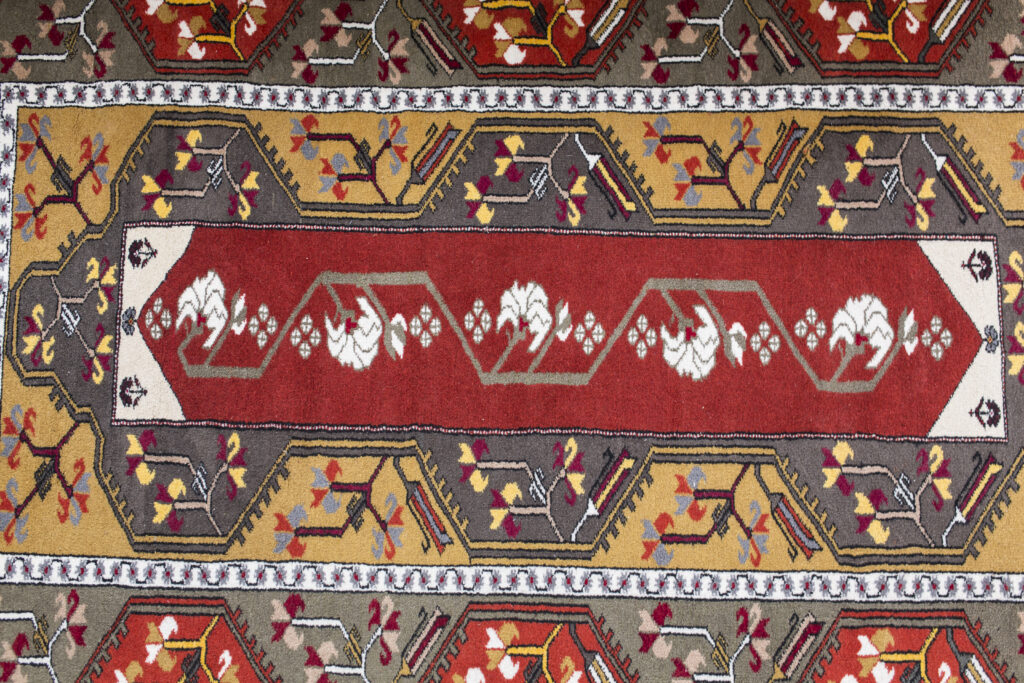
Turkey is a country where carpet weaving is a common artistry. The Turkish kilim, Bergama, Oushak, Hereke, Gelveri, Melas and Anatolian carpets are some of the most famous rugs produced in the country. Each of them is different in size, designs, colors and purposes of use. Turkey is renowned for its prayer rugs, especially the one made in the southwestern city of Milas. They can be found under both names of Milas and Melas and the use of yellow color is one of their special traits. Carpet making is one of the ways that the inhabitants of the area use for preserving the traditions inherited by their nomadic Turkmen ancestors.
Diverse Styles Within Milas Weaving
Milas carpets and rugs, also referred to as Milâs or Melas, embody a variety of styles and designs, making each piece a unique work of art. Variants such as Ada Milas, Patlıcanlı, Cıngıllı Cafer, Gemisuyu, and Elikoynunda showcase the diversity within Milas weaving, each named for its distinctive style, colors, and characteristics. This diversity not only reflects the rich textile tradition of the region but also the adaptability and creativity of its weavers.
The Milas rugs made for praying purposes are smaller in size compared to the rugs produced for trade. Milas are not as older as other types of Turkish rugs. The first exemplars have been weaved around the 16th century. The inhabitants of Milas used natural fibers like wool, silk and cotton, vegetable dyes extracted from plants or other sources like minerals and insects.
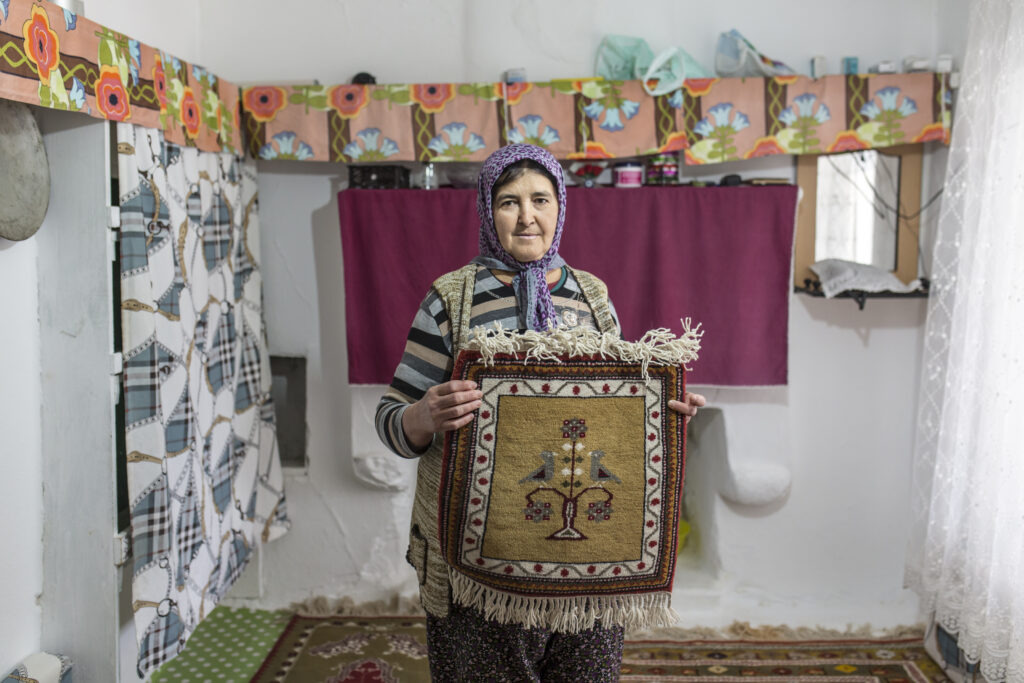
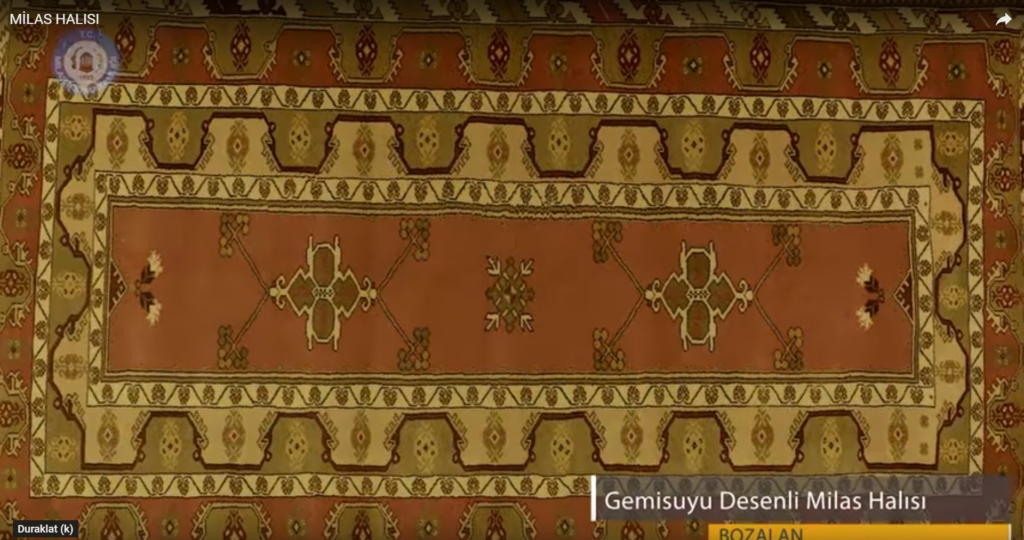
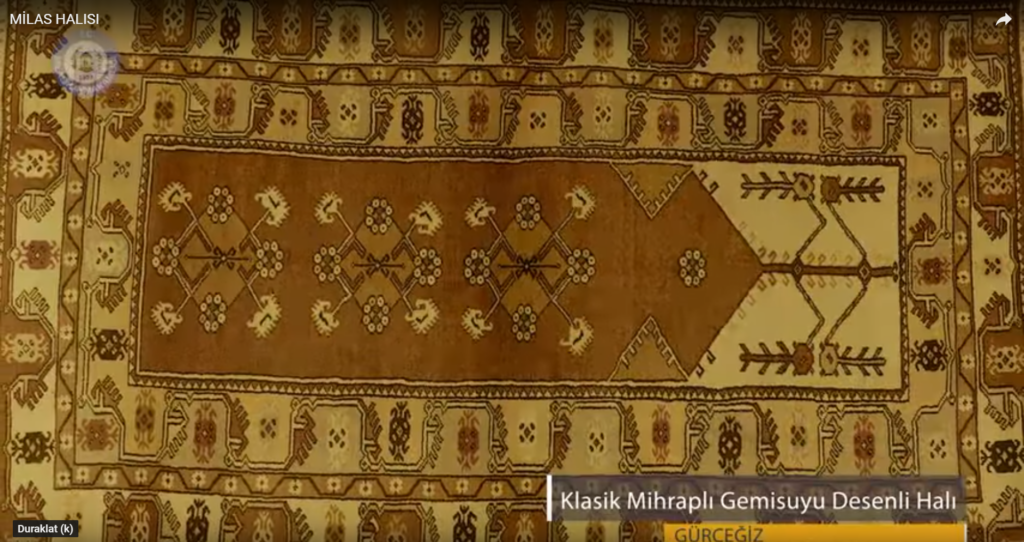
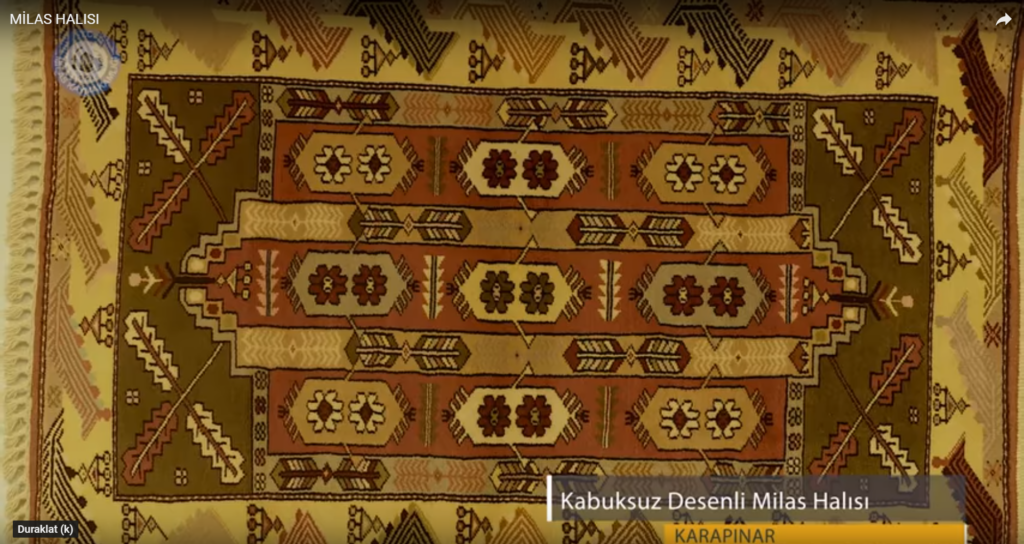
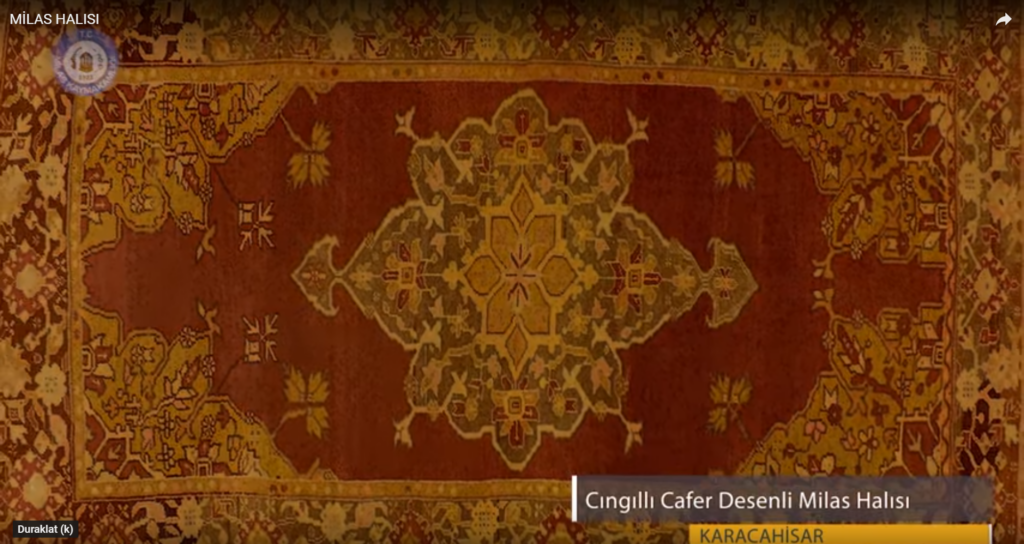
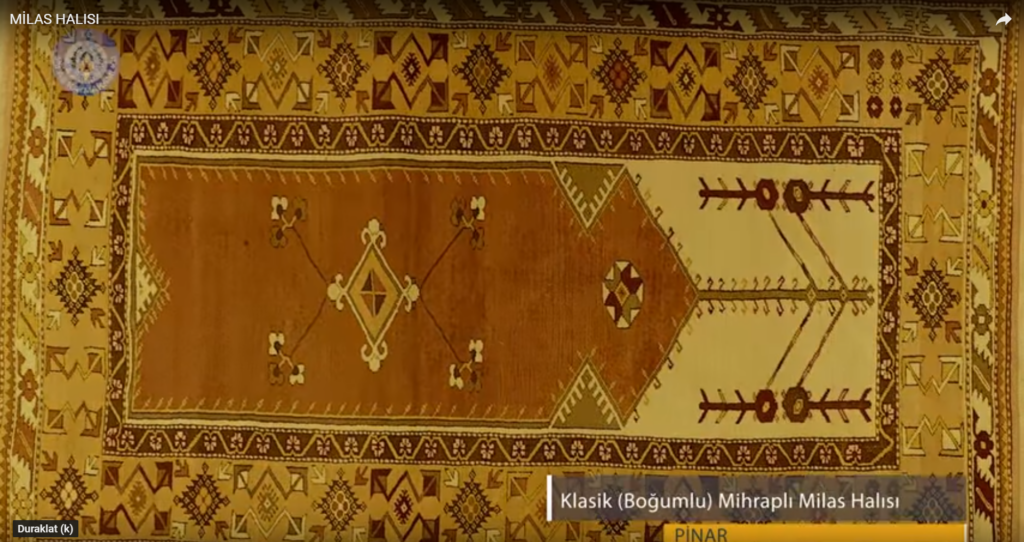
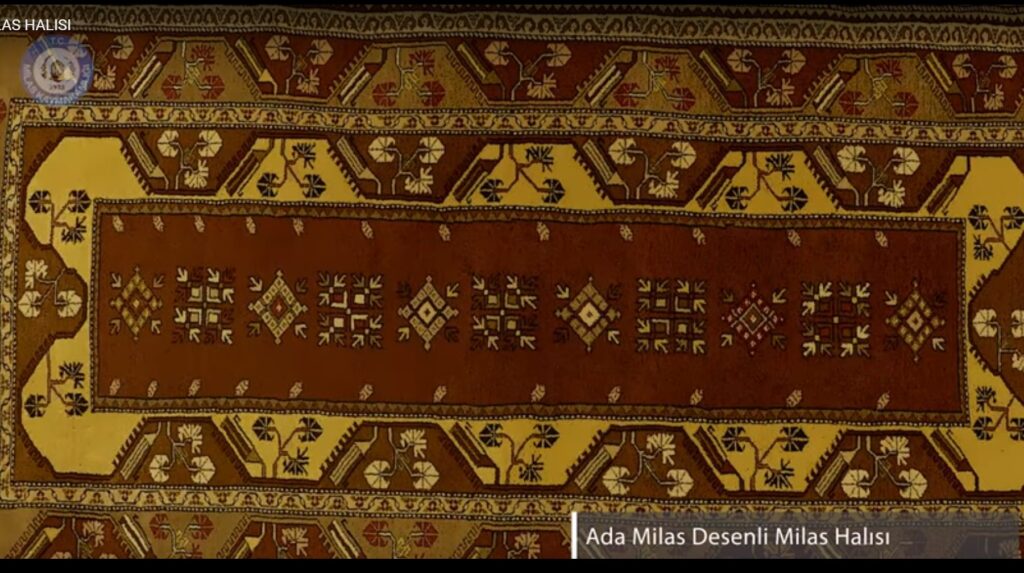
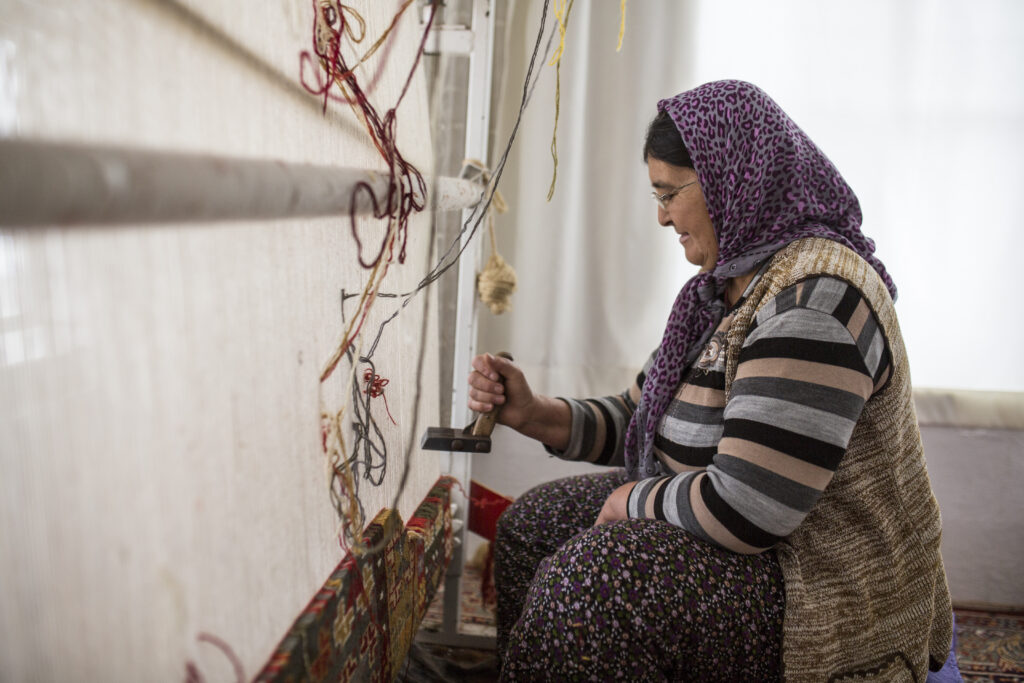
Türkmen Heritage and Carpet Weaving
The Milas region, with its deep Türkmen roots, has preserved its semi-nomadic heritage through various forms, including the art of carpet weaving. This tradition, believed to have started in the 16th century, initially focused on seccade (prayer rug) designs, which are smaller in dimension and rich in symbolic motifs. By the 18th and 19th centuries, Milas weavers had distinguished their output into traditional (or classical) and baroque types, each reflecting the evolving tastes and influences of the times.
Milas rugs have designs that are not traditional to Anatolia. Their large geometric shapes show Turkmen elements as well as the use of yellow, brown and reddish colors.
On their part, Europeans have seen for the first time the examples of Turkish rugs in the paintings of Lorenzo Lotto and Young Hans Holbein. These paintings of rugs, which arrived in Europe as diplomatic gifts, are important documents that provide detailed information on Turkish rugs.
However, the traditional and baroque types of Milas rugs have been weaved during the 18th and 19th centuries. The classical type is found under the Ada Milas name.
At the same time, Europeans started to bring Turkish prayer rugs to their countries. The 19th century coincides with the time when the service of the Orient Express train was launched. More and more Europeans started traveling to Turkey not only for trade purposes, but also because of the fame and beauty of Constantinople. The influence of Europeans to the Ottoman art and culture had an impact even on Milas rugs and this how the baroque style was created.
Prayer rugs remain a source of income for the people of Milas and increased tourism due to the nearby Bodrum helped for spreading the beauty of these rugs all around the world.
Classical Milas Carpets: Echoes of the Past
Classical Milas carpets are a homage to the original 16th-century prayer rugs, featuring a rectangular niche (“mihrâb”) that signifies the sacred space of prayer. Decorated with plant motifs and an âlem above the niche, these rugs encapsulate heavenly promises and the weavers’ deep spiritual connections. The Ada Milas, one of the oldest examples, carries historical and cultural narratives, possibly linked to Queen Ada of Caria or the immigrant weavers from the island of İstanköy (Cos).
The Evolution of Milas Designs: From Traditional to Baroque
As European influences permeated the Ottoman Empire, Milas rugs began to adopt baroque elements, introducing zigzagging flower designs and moving away from the orderly motifs of their classical predecessors. This stylistic evolution reflects the dynamic nature of Milas weaving, embracing external influences while maintaining its distinct identity.
Medalled Milas Carpets: A New Tradition
Another intriguing category within Milas weaving is the “medalled” carpets, originating from the village of Karacahisar. These rugs feature a centrally located “belly” (“göbek”) with medal-like designs, surrounded by abstract patterns of leaves and branches. This departure from the traditional prayer rug design represents the innovative spirit of Milas weavers, offering new aesthetics while respecting the craft’s historical roots.
The Palette of Milas: Natural Dyes and Vibrant Colors
Milas carpets are renowned for their distinctive colors, achieved through the use of natural dyes derived from local flora and fauna. The unique shades of yellow, obtained from peach and apricot leaves, and the reddish brown reminiscent of the region’s ancient Carian inhabitants, are hallmarks of Milas rugs. These natural dyes not only provide a rich color palette but also ensure that the rugs age gracefully, developing a patina that adds to their beauty over time.
Weaving Centers and the Impact of Tourism
The villages surrounding Milas, such as Karacahisar, Ören (Gereme), and Çomakdağ, remain vibrant centers of rug weaving, each contributing to the rich diversity of Milas carpets. The international acclaim of nearby Bodrum has introduced Milas rugs to a global audience, elevating their status as sought-after pieces of cultural and artistic expression. Today, up to 7,000 weavers’ looms remain active in the region, a testament to the enduring appeal and significance of Milas carpets.
Milas Rugs in the Modern World
Milas rugs, with their deep historical roots and evolving designs, continue to enchant collectors and enthusiasts around the world. From the classical to the baroque and medalled designs, these carpets tell a story of cultural resilience, artistic innovation, and the enduring beauty of Turkish craftsmanship. As symbols of Türkmen heritage and artistic expression, Milas carpets hold a special place in the world of traditional textiles, bridging the past with the present and future.
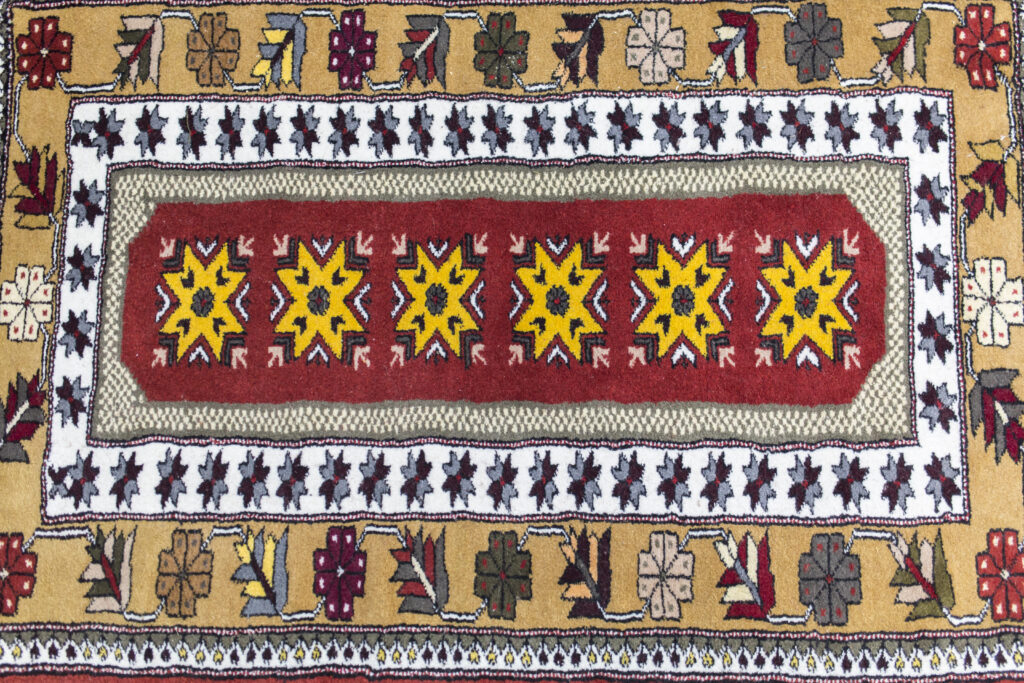
References:
Gardetti, Miguel Ángel; Muthu, Subramanian Senthilkannan (8 October 2021). Handloom Sustainability and Culture: Artisanship and Value Addition. Springer Nature. pp. 64–65. ISBN978-981-16-5272-1.

